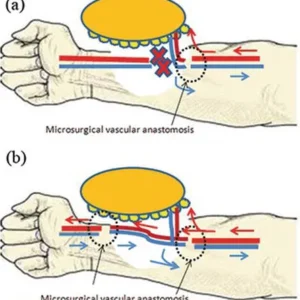Description
Familiarity with Treatment
Ankle replacement surgery, also known as total ankle arthroplasty, is a surgical procedure aimed at addressing end-stage ankle arthritis or severe ankle joint damage. Orthopaedic surgeons specializing in foot and ankle surgery are specifically trained to perform ankle replacements and manage any associated complications. The procedure involves the implantation of a prosthetic ankle joint to restore function and alleviate pain 1
Procedure
During ankle replacement surgery, the damaged parts of the ankle joint are replaced with a prosthetic implant. The procedure aims to improve joint function and reduce pain, ultimately enhancing the patient’s mobility and quality of life. The success rate after 10 years is reported to be 89%, with an annual failure rate of 1.2% 2
Who is it Suitable for?
Ankle replacement surgery is suitable for individuals with end-stage ankle arthritis or severe ankle joint damage that has not responded to non-surgical treatments. It is recommended for those experiencing chronic pain, limited mobility, and a decreased quality of life due to ankle joint issues.
Who is it Not Suitable for?
Ankle replacement surgery may not be suitable for individuals with certain medical conditions that increase the risks associated with surgery. Additionally, those with less severe ankle joint issues that can be effectively managed through non-surgical treatments may not be suitable candidates for this procedure.
Advantages
The advantages of ankle replacement surgery include the potential for pain relief, improved joint function, and enhanced mobility. Patients may experience an increase in cadence, stride length, and ankle range of motion postoperatively 3
Complications
Complications associated with ankle replacement surgery may include the risk of infection, delayed healing, and the potential need for revision surgery. Reoperations may be required to address complications such as wound healing issues, aseptic loosening, and malleolar fractures 4
Preoperative Care
Preoperative care for ankle replacement surgery involves thorough patient evaluation and planning, taking into account all relative and absolute contraindications. Preoperative rehabilitation, including strength and movement improvement in the ankle, is recommended to optimize postoperative recovery and decrease the risk of postoperative stiffness 5
Postoperative Care
Postoperative care for ankle replacement surgery focuses on monitoring the patient’s physiological health and aiding in postsurgical recovery. This phase may involve rehabilitation, immobilization of the ankle, and a gradual return to weight-bearing activities after a specified period. Close adherence to postsurgical care instructions is crucial for successful recovery and long-term joint function 1




Reviews
There are no reviews yet.